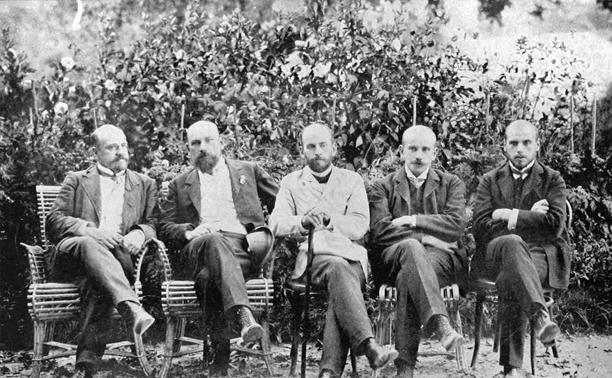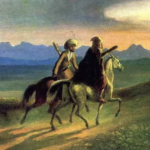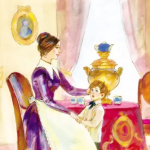
20.12.2022
The subject of Tolstoy’s surroundings is not only interesting in itself, but also extremely important for a deeper understanding of the great writer’s personality. Leo Tolstoy’s surroundings are organically part of his biography and work, and our understanding of his legacy depends to a large extent on our knowledge of the environment in which he lived and worked.
His secretary Bulgakov, who wrote a series of essays on his Russian friends and followers, explaining his motives for turning to this subject, wrote: “I have often thought that the time will come when everything, even the smallest detail, about the life and person of Leo Tolstoy will be studied. And it may turn out that future readers will need information not only about Tolstoy himself, but also about people in his immediate environment, in particular his friends and acquaintances, as the characterization of one or another of them, to some extent, may serve as material for a deeper understanding of the personality and activities of Tolstoy and his era.

The circle of people who met Tolstoy during his long 82-year life is unusually wide and varied in its upbringing, education, class composition, professional affiliation, position in society of its individual representatives. We meet Decembrists, friends and acquaintances of Alexander Pushkin, statesmen, musicians, artists, journalists, diplomats, revolutionaries, representatives of the tsarist family, and numerous natives of the people in Tolstoy ‘s entourage. The writer’s surroundings of the last quarter of the 19th century and the beginning of the 20th century are particularly diverse.
During this period famous personalities of art and science were frequent guests in the house of the Tolstoys: Taneyev, Mechnikov, Nesterov, Repin, Paolo Trubetskoy, Andreyev, Stasov and others. Friends of his youth – Dyakov, the Olsufievs and Urusov – often visited. Every morning peasant petitioners gathered at the Yasnopolyanskoye house. Other types of peasant visitors also appeared, often coming from afar to talk to LT about the land, God, faith, the government, and the revolution that had begun in the country.
This diversity of visitors is not accidental, it was generated by the conditions prevailing in Russian public life in the second half of the nineteenth and early twentieth centuries. – It was a time of flourishing Russian culture, an intense process of spiritual life and national self-awareness. Tolstoy’s biographer Biryukov explains reasons of the attraction of hundreds of people for Tolstoy: “These people had the need of inner moral work… In these people lived the need for an absolute, that is, a religious criterion of morality. And this need was deeply and widely satisfied by Tolstoy with his religious-philosophical writings.

Tolstoy’s interactions with his contemporaries raised eternal problems of existence – questions of life and death, good and evil, the search for the meaning of life, truth, the perfection of society and man, war and peace… Lev was approached to get answers to all kinds of queries of the spirit. Already then for many thousands of people Lev became a real “teacher of life”. So, both a specialist scientist and a semi-literate farmer were attracted to this source of warmth and light with the same enthusiasm.
The atmosphere of the Yasnaya Polyana house, the friendliness and hospitality of its inhabitants, also facilitated the flow of visitors. Sophia Tolstaya wrote: “There was something elusive in the atmosphere of our home that was loved by almost everyone and, of course, the centre of our life was the intellectual and artistic life of Leo Tolstoy, and the background to it was the lovely young people and my love for people, for communicating with them.
The literature on Tolstoy is vast, but the subject of Tolstoy’s environment in today’s Tolstology has been undeservedly neglected.
One of the first who turned to it was Apostolov, who in 1928 published a book “Leo Tolstoy and his Companions”. It was essentially a sketch of the relationship between Leo Tolstoy and his contemporaries.
At the same time, the subject of Tolstoy’s entourage is widely covered in memoirs. Among the books on this subject of particular value are memoirs of Tolstoy’s wife, children, secretaries – Gusev and Bulgakov, doctor and friend of the writer Makovitsky, as well as personal memoirs of those who were in Yasnaya Polyana. In modern Tolstov studies, with an abundance of literature on individuals from the writer’s entourage – famous figures of culture, art, science, with a number of articles examining the relationship of Lev with certain representatives of his social circle, there is no summary of brief information articles on this topic. We offer to your attention a series of mini-essays which will be gradually replenished with new materials. Each of the users of this section of the site has the right to make their suggestions and additions through the Information Office.




